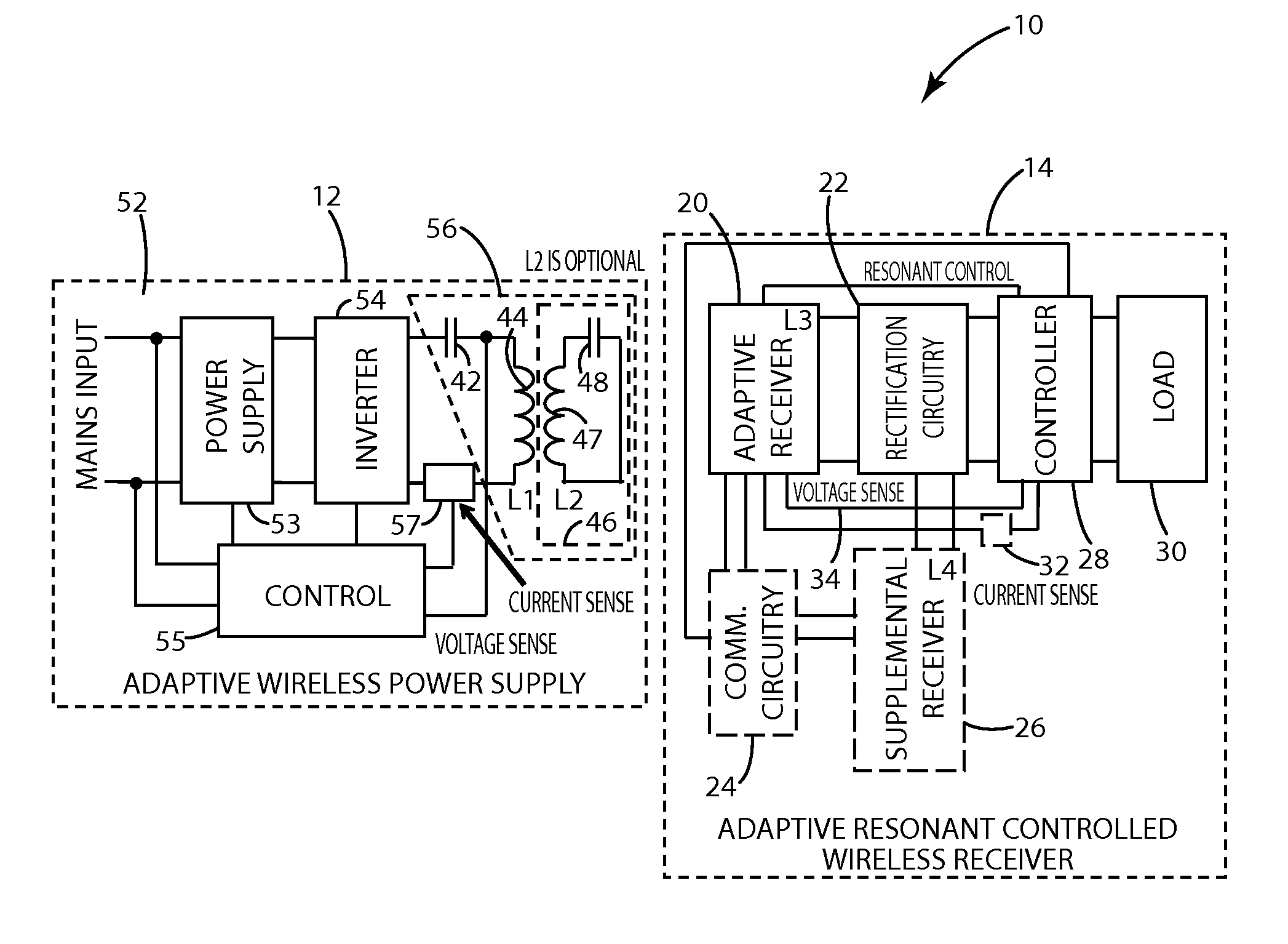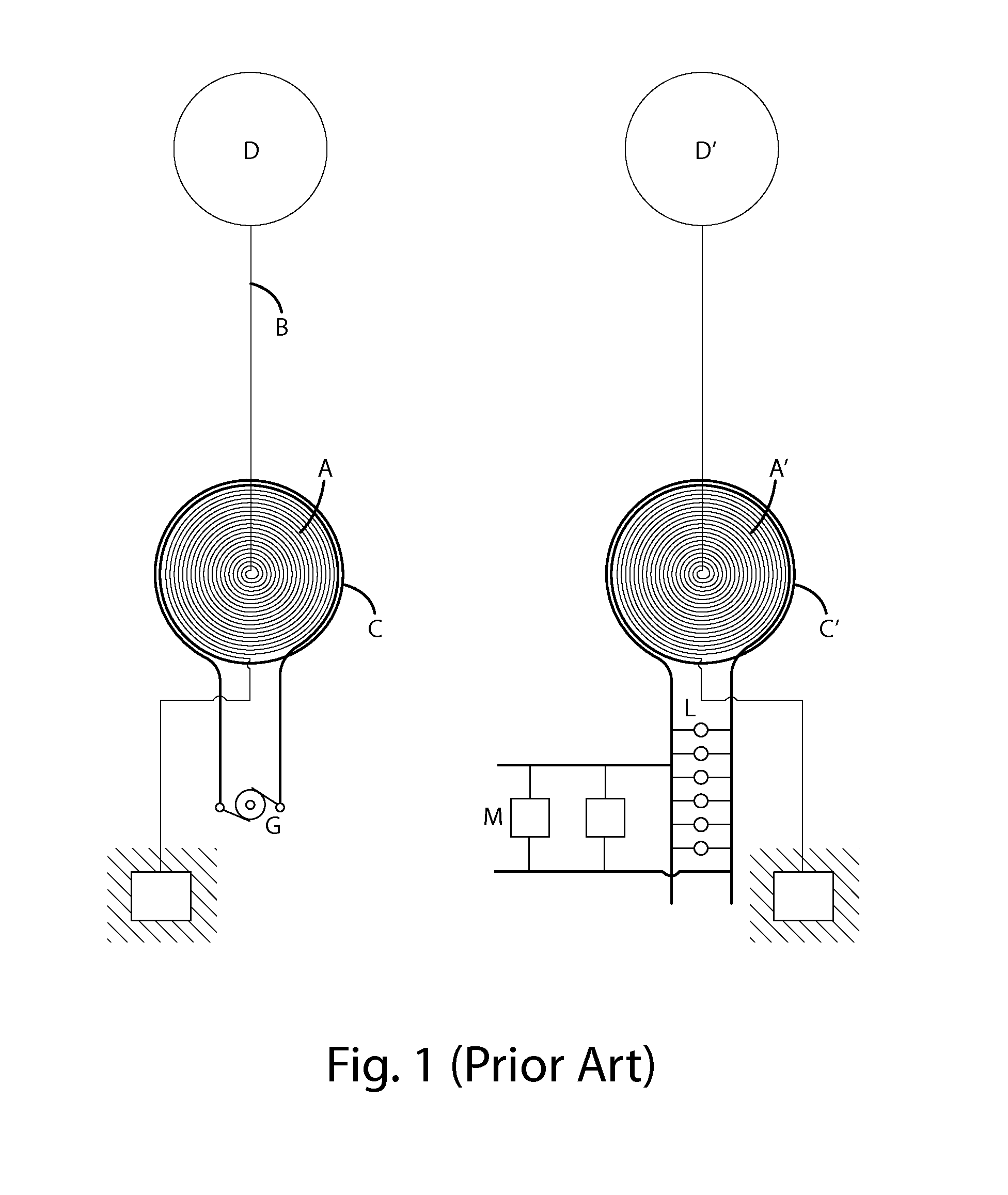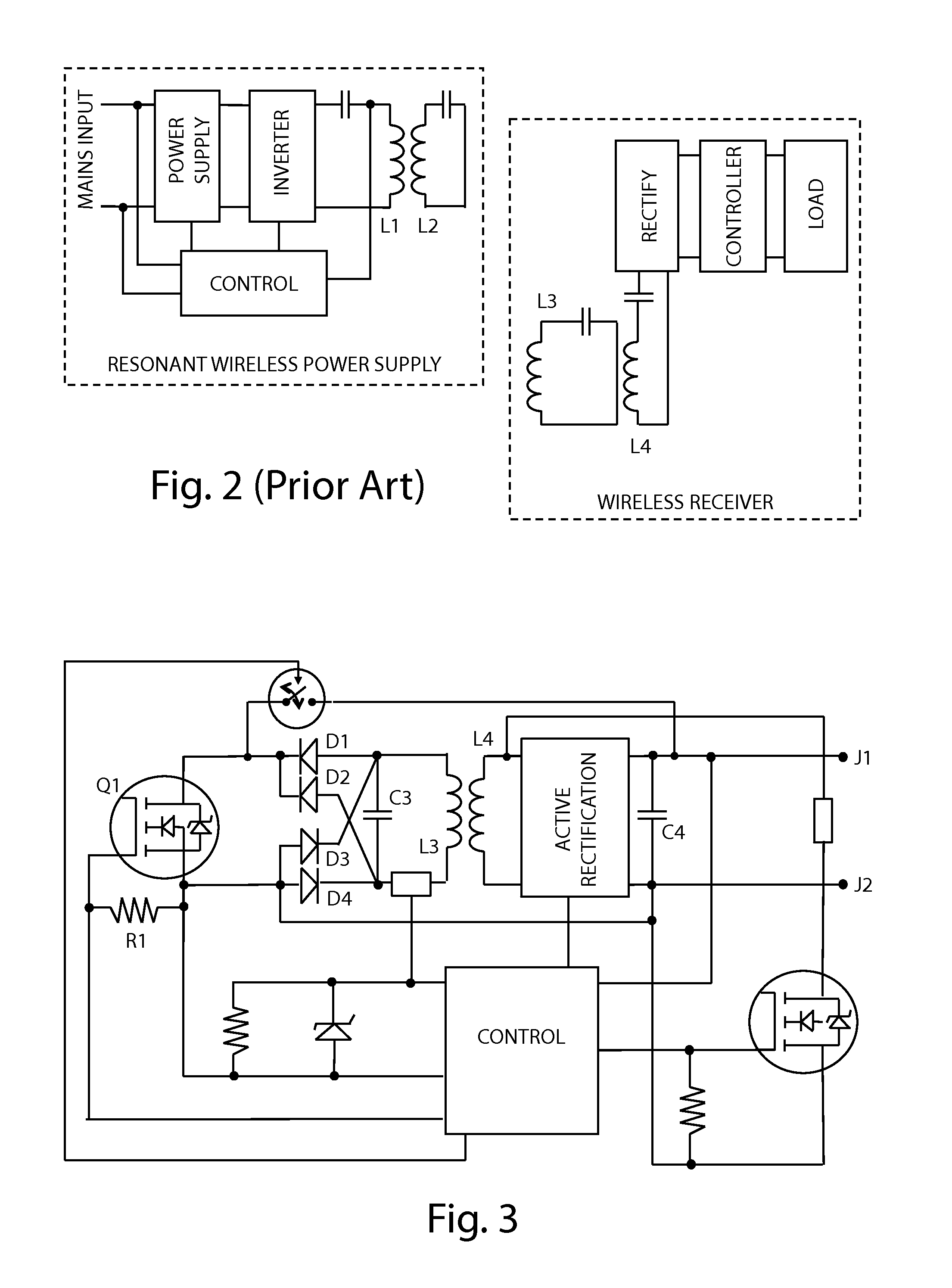Wireless power control
a technology of power control and wires, applied in the direction of circuit arrangement, inductance, safety/protection circuit, etc., can solve the problems of imposing restrictions on the operating parameters of the system, affecting the efficiency of the system, so as to achieve the effect of being ready to energiz
- Summary
- Abstract
- Description
- Claims
- Application Information
AI Technical Summary
Benefits of technology
Problems solved by technology
Method used
Image
Examples
Embodiment Construction
[0099]A wireless power supply system in accordance with an embodiment of the present invention is shown in FIG. 4 and designated 10. A remote device in accordance with one embodiment of the present invention can enable flexible power transfer, for example to allow the remote device to control the amount of power it receives. The wireless power supply system 10 includes a remote device 14 configured to receive wireless power and a wireless power supply 12 configured to transmit power. Although described in connection with a single remote device 14, the present invention is not limited to power transfer to just one remote device 14 and is well suited for supplying power to multiple remote devices, such as by supplying power sequentially or simultaneously. One or more of the remote devices 14 in this circumstance may be conventional remote devices.
[0100]The present invention is described in connection with a wireless power supply system that implements a form of adaptive resonance cont...
PUM
 Login to View More
Login to View More Abstract
Description
Claims
Application Information
 Login to View More
Login to View More - R&D
- Intellectual Property
- Life Sciences
- Materials
- Tech Scout
- Unparalleled Data Quality
- Higher Quality Content
- 60% Fewer Hallucinations
Browse by: Latest US Patents, China's latest patents, Technical Efficacy Thesaurus, Application Domain, Technology Topic, Popular Technical Reports.
© 2025 PatSnap. All rights reserved.Legal|Privacy policy|Modern Slavery Act Transparency Statement|Sitemap|About US| Contact US: help@patsnap.com



